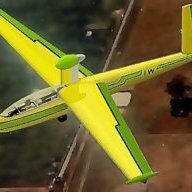Simple: It's not fire-resistant. Admittedly engine fires are rare, nowadays, but that is largely the result of good practice in regard to fuel systems as a result of WW2 experience. Fuel system fire resistance is built in to aircraft certification design standards:
§ 23.1183 Lines, fittings, and components.
(a) Except as provided in paragraph (b) of this section, each component, line, and fitting carrying flammable fluids, gas, or air in any area subject to engine fire conditions must be at least fire resistant, except that flammable fluid tanks and supports which are part of and attached to the engine must be fireproof or be enclosed by a fireproof shield unless damage by fire to any non-fireproof part will not cause leakage or spillage of flammable fluid. Components must be shielded or located so as to safeguard against the ignition of leaking flammable fluid. Flexible hose assemblies (hose and end fittings) must be shown to be suitable for the particular application. An integral oil sump of less than 25–quart capacity on a reciprocating engine need not be fireproof nor be enclosed by a fireproof shield.
(b) Paragraph (a) of this section does not apply to—
(1) Lines, fittings, and components which are already approved as part of a type certificated engine; and
(2) Vent and drain lines, and their fittings, whose failure will not result in, or add to, a fire hazard.
Normal practice is to use a steel bulkhead fitting through the firewall, and run fire-resistant lines from there to the engine.
("Fire resistant" is defined in FAR Part 1 - from memory, it requires the item to be capable of resting 1100 degrees F for 15 minutes)
Good practice is to minimise the fuel system components forward of the firewall, (e.g. fuel filters, electric fuel pumps, etc), and to use hose that is essentially high-pressure hydraulic line - which takes a while to burn through - with fire-sleeve over it; and make sure the hose end fittings are steel, not aluminium. I know this may seem futile, when the engine-driven fuel pump and the carburettor are both aluminium, but in point of fact they are much more massive than the fuel line itself, and also they are protected to a degree by the latent heat involved in boiling the fuel out of them. The fire sleeve also serves a secondary purpose, in that it converts a pressurised fuel spray from a split in the hose, to a dribble of fuel from the end of the sleeve. The older grades of hydraulic tube go hard after about six years, so they are a nuisance-value maintenance item. They have largely been superseded by PTFE (Teflon) lined tubes with braided jackets, but although this will resist higher operating temperatures before it goes brittle or melts, it does not survive as long as the older type in a fire, so good fire sleeving is still essential.
This is what you find in GA aircraft, though it has taken manufacturers a while to wake up to the fact that the electric pump, gascolator etc should be either under or aft of the wing (where the fuel tanks are) in order to minimise the risk of vapour lock.
This standard is difficult to achieve in recreational aircraft, because the carburettor etc are much less massive than in GA aircraft, and they use a simple hose barb for the fuel line connection; but you can still approach the standard by appropriate choice of the fuel line and correct use of fire sleeving.
Transport category aircraft no longer use aluminium tube, because it does succunb to vibration unless it is adequately supported; they use stainless steel.




